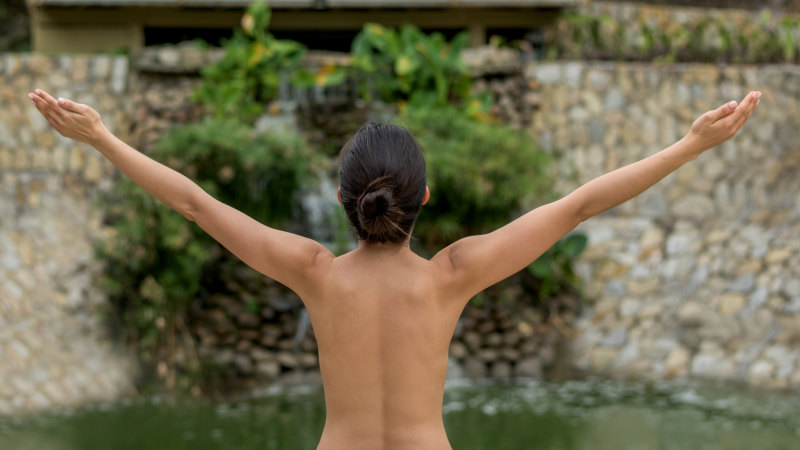[ad_1]

“In most countries, nudity is understood as something mostly reserved for private spaces. There are exceptions of course, and how each country polices these norms varies.”
How accepting a society is of nudity also depends on the strength of the association between sex and nudity, Rosewarne adds, as well as whether nudity is considered a state of vulnerability or power.
“There are people who view nudity as something exploitative, something which renders a person vulnerable,” she says. And while it’s difficult to generalise for an entire country (and even by demographics), Rosewarne says Australians are “probably more conservative about nudity than much of Europe, and a little less so than the US”.
That seems about right. Europe has a history of naturist movements, says Dr Camilla Skovbjerg Paldam, a lecturer in the department of communications and culture at Aarhus University in Denmark, which originated in Germany and northern Europe.
“If we go back to the beginning of the 20th century, we had this movement where you started focusing on the healthy body, and to talk about a healthy soul in a healthy body,” she tells me.
Loading
“The body in this context was not sexualised in any way.”
In Denmark, that sort of mindset is normal – but to a point. Paldam points out that since she was a child, the country has increasingly become more conservative.
“The acceptance of nudity in Denmark has changed a lot over the last 20 or so years,” says. “When I was in school in the ’80s, all the children would take a shower after sport. We were separated into genders but changed after showering in the one room, and no one really thought about it.”
Like its European neighbours (among French women, topless bathing reached a 40-year-low in 2021; and a 2019 poll found a similar trend among women in Britain, Germany, and Italy) Denmark’s younger women in particular are opting out of baring all.
There are several theories as to the reasons behind this (women are now liberated and don’t need to protest with their bodies as their grandmothers’ did; a growing awareness of skin cancer and ageing), but most historians and sociologists believe it’s to do with the internet, the smartphone and social media.
Unlike in the days of yore, where one’s naked body could only be observed by fellow inhabitants of the beach, today’s Millennials and Gen Zs know all too well that with a simple click of a button their birthday suit can easily find its way to a global audience.
Exposure to social media, especially visual platforms such as Instagram and Snapchat where we tend to show ourselves in our best light, has also contributed to a rise in negative social comparison, with most young women reporting feeling worse about their appearance after scrolling.
Danish women are not exempt from this, especially when it comes to body comparisons, with a recent study finding that more young people in Denmark seem to be particularly concerned with the appearance of their bodies.
And yet, Denmark continues to push the envelope when it comes to nudity – and especially when it comes to teaching children about the body.
Loading
Television shows such as Ultra Strips Downwhich feature naked adults standing in front of kids, answering their questions about penises, breasts and vaginas, are created as educational tools to fight body-shaming and encourage body positivity.
And pools such as the one I attend (I was told it’s actually the most nudity-friendly pool in the region) continue to exist to give people the option to look beyond the screen and see reality.
Confronting, maybe, but at least it’s real, raw and human – which is far more than we can say about most things these days.
Caroline Zielinski is a freelance writer.
The Opinion newsletter is a weekly wrap of views that will challenge, champion and inform your own. Sign up here.
[ad_2]
Source link